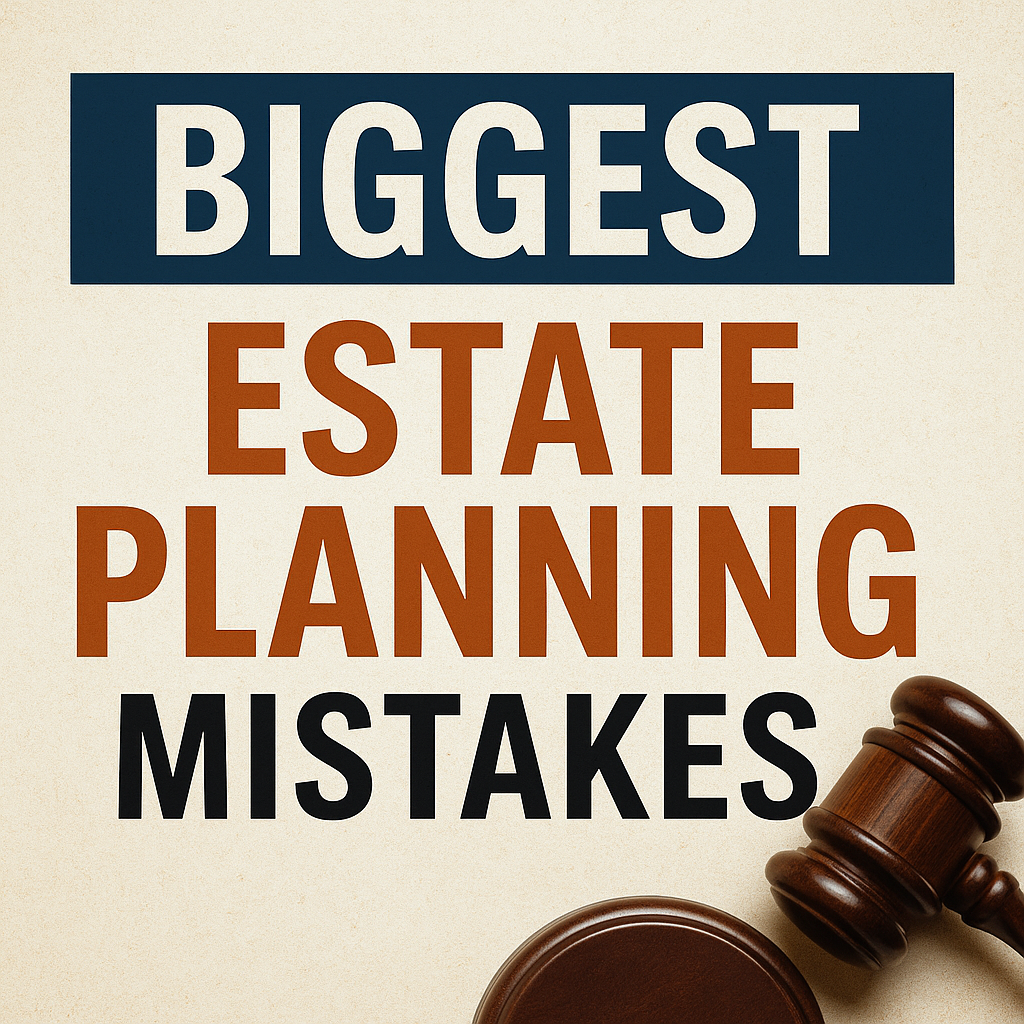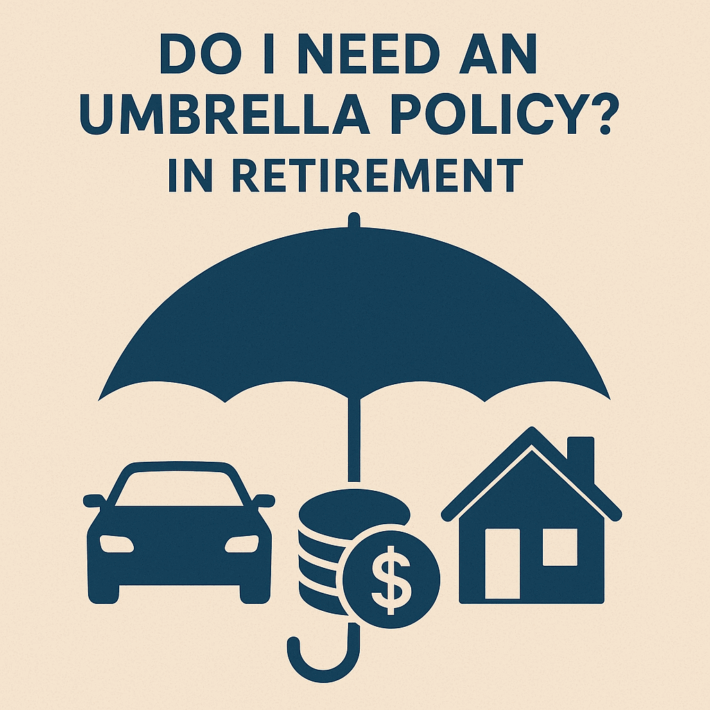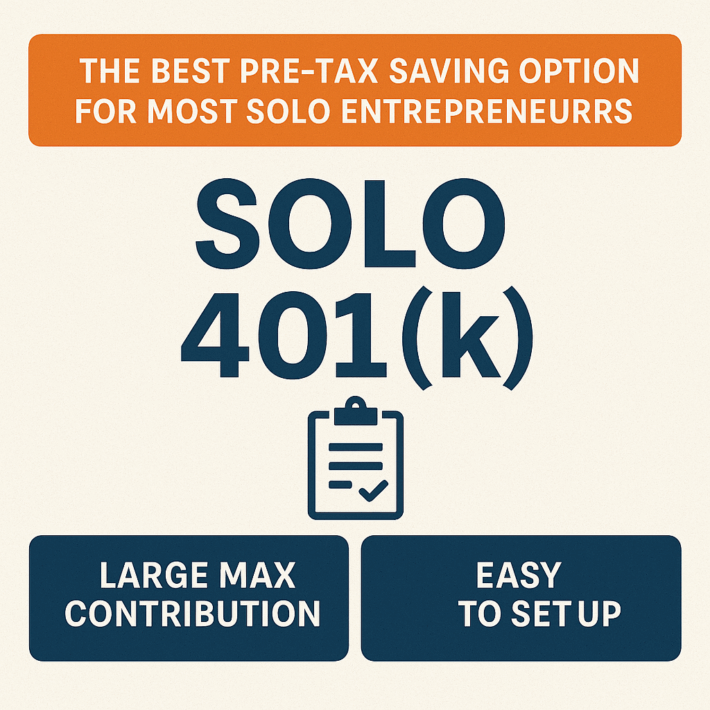Biggest Estate Planning Mistakes (and How to Avoid Them)

Introduction: Avoiding Costly Estate Planning Mistakes
Estate planning can feel overwhelming. Between the technical jargon and conflicting advice, it’s easy to make mistakes that could cost your loved ones time, money, and peace of mind. I see two main types of mistakes when it comes to estate planning: not planning at all and planning way too much.
Let’s dive into the most common pitfalls and how you can sidestep them.
Mistake #1: Not Planning At All
For some, estate planning feels unnecessary or intimidating. Maybe they’ve heard bad advice or just assume a will covers everything. That’s a common misconception.
A will alone leaves out a lot:
- Living wills
- Financial Powers of Attorney (FPOAs)
- Medical Powers of Attorney (MPOAs)
- Beneficiary designations
- Durable and springing prefixes to those POAs
- Medical directives
And this isn’t just theoretical. I’ve seen families hit hard by failing to have these essentials in place. It’s also shockingly common for people to forget to name beneficiaries on investment accounts. That’s a two-minute task that can save your family a ton of hassle later.
Case in Point:
A client of mine recently discovered that their late father’s investment account didn’t list a beneficiary. The funds had to go through probate, delaying access for months and adding unnecessary stress during an already difficult time.
Mistake #2: Overdoing It
On the other end of the spectrum are those who go overboard. Maybe they attended a seminar and walked away convinced they needed multiple complex trusts. While trusts have their place, they’re often misunderstood.
For example:
Some people believe that dumping assets into a trust will shield them from long-term care costs. However, Medicaid has a 5-year look-back period. If you transfer assets into an irrevocable trust within five years of applying for Medicaid, the assets might not be seized, but benefits can be delayed significantly.
The Problem:
Assets locked in an irrevocable trust can be challenging to retrieve when you need them most. I’ve seen clients get stuck in this situation, and it’s not pretty.
Reality Check:
A revocable living trust can help manage your estate without making it inaccessible in an emergency. It’s all about choosing the right tool for your situation.
Simple Steps to Make Life Easier for Your Heirs
Now that we’ve covered the biggest mistakes, here are some straightforward steps to keep your estate plan efficient and family-friendly.
1. Avoid Probate:
Probate can be slow, expensive, and stressful. Here’s how to avoid it:
- Name Beneficiaries: Make sure all financial accounts list primary and contingent beneficiaries.
- Transfer-on-Death (TOD) Designations: Use these for investment accounts and property deeds.
- Joint Ownership: In some cases, joint ownership can bypass probate altogether.
- TOD Deeds: These can help keep real estate out of probate if done correctly.
Pro Tip:
A TOD deed can be set up on your primary home, allowing the property to pass directly to your heir without the hassle of probate.
2. Think About Taxes:
Taxes can eat away at your estate if you’re not proactive. Pre-tax accounts like IRAs and 401(k)s are often the worst culprits when it comes to passing on wealth.
What to Consider:
- Required Minimum Distributions (RMDs): These can push your beneficiaries into a higher tax bracket.
- Roth Conversions: Converting to a Roth IRA while you’re still alive allows heirs to inherit tax-free assets.
- Charitable Giving: Donating from pre-tax accounts can offset tax liabilities.
Example:
If you plan to give a portion of your estate to charity, direct gifts from your IRA can reduce the taxable portion of your estate.
Avoiding Probate Delays and Legal Headaches
Keeping your estate plan updated is crucial. Here are some practical tips:
- Review Beneficiaries Annually: Life changes fast. Make sure your documents keep up.
- Consolidate Accounts: Multiple small accounts create confusion. Streamline where possible.
- Organize Important Documents: Make it easy for your executor to find what they need.
Getting Started with Estate Planning
Estate planning doesn’t have to be daunting. Start with the basics and expand as needed:
- Will: Outline who gets what.
- POAs: Designate trusted individuals to make financial and medical decisions.
- Living Will: State your medical wishes.
- Beneficiary Designations: Keep them updated and accurate.
Keep It Simple:
Your estate plan should grow with your life changes. Marriages, divorces, births, and deaths all impact your plan. Revisit it regularly to ensure it stays relevant.
Final Thoughts: Be Proactive, Not Reactive
When it comes to estate planning, it’s easy to fall into the trap of either doing too little or doing way too much. The goal is to strike a balance that protects your legacy without creating unnecessary complexity.
Take Action Today:
- Start small and build up.
- Seek professional guidance to tailor the plan to your needs.
- Revisit your plan regularly to keep it aligned with your life.
By planning thoughtfully, you’ll not only make things easier on your heirs but also ensure your wishes are carried out exactly as intended.



